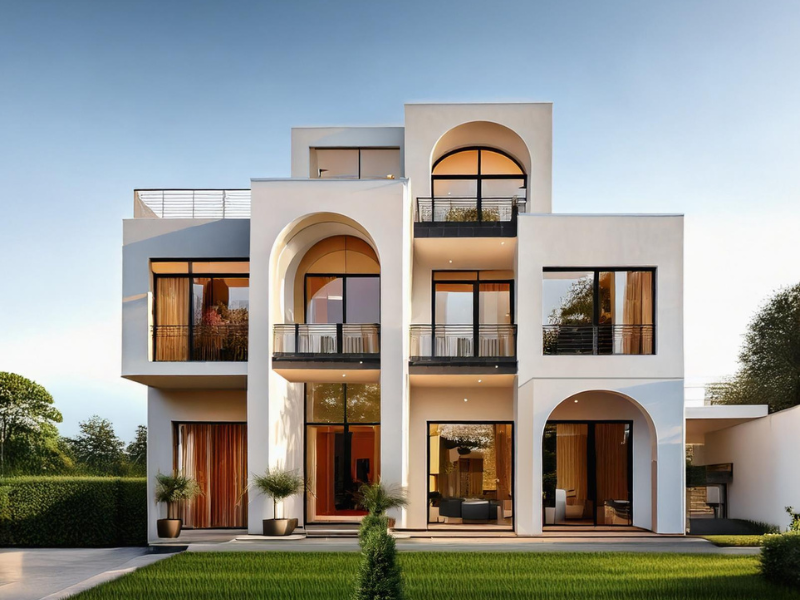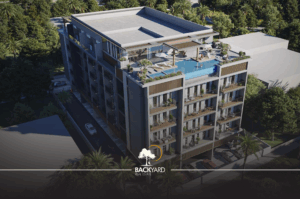
Real estate decisions go far beyond picking the right neighborhood or finding the lowest price. One crucial detail that often confuses buyers is the type of finishing a unit comes with.
Whether you’re a first-time buyer, seasoned investor, or developer, understanding the types of finishing in real estate can help you make smarter decisions, save on hidden costs, and align the property with your personal or business goals.
- Core & Shell Finishing
What Is Core & Shell in Real Estate?
Core & Shell is one of the top types of finishing in real estate refers to a property that includes only the essential structural components like the concrete frame, outer walls, and preliminary utility systems. These units come without any internal finishing, meaning there are no tiles, ceilings, wall paint, or installed fixtures.
Pros of Core & Shell:
- Maximum Design Flexibility: Perfect if you want to create a personalized space from scratch.
- Lower Initial Cost: Since there are no interior finishes, the purchase price is usually lower.
- Faster Delivery: Developers can complete and hand over core & shell units quicker than fully built ones.
Cons of Core & Shell:
- Not Ready for Use: Requires substantial time and effort before it’s livable or rentable.
- Additional Costs: You’ll need to hire professionals for the interior work, increasing the total cost.
- Planning Needed: Budgeting, designing, and supervising can be time-consuming.
Best For:
- Developers, interior designers, or investors looking for complete control over the layout and design.
- Semi-Finished Properties
What Does Semi-Finished Mean?
Semi-finished homes come with basic construction elements completed like plastered walls, electrical wiring, water piping, and basic flooring but leave the final interior touches up to the buyer.
Pros of Semi-Finished Units:
- Cost-Effective Balance: Lower price than other types of finishing in real estate such as fully finished, but more complete than core & shell.
- Moderate Customization: Offers flexibility while skipping the structural hassle.
- Quicker to Finish: You can move in sooner compared to a core & shell unit.
Cons of Semi-Finished Units:
- Limited Design Control: Some elements like outlet placement or wall layout may already be fixed.
- Still Not Move-In Ready: You’ll need to handle paint, tiles, kitchen cabinets, and bathroom fixtures.
- Style Mismatches: Standardized features may not reflect your taste.
Best For:
- Homebuyers or investors who want a partial head start but still wish to add their personal touch.
- Fully Finished Homes
What Is a Fully Finished Unit?
Fully finished properties are turnkey units, these units come complete with flooring, paint, lighting, and fixtures, allowing buyers to settle in without the hassle of further construction..
Pros of Fully Finished Homes:
- Immediate Occupancy: No waiting or renovations required.
- Stress-Free Process: Great for busy professionals or international buyers.
- Transparent Costs: The final price typically includes all finishing expenses.
Cons of Fully Finished Homes:
- Higher Upfront Cost: Premium pricing due to the added finishing work.
- Minimal Customization: Changes can be expensive or even restricted by the developer.
Best For:
- A smart choice for rental investors who prioritize time efficiency and zero setup delays.
Where Smart Investors Are Buying Fully Finished Real Estate in Egypt?
If you’re exploring the types of finishing in real estate, especially fully finished homes in Egypt, here are some top real estate projects worth checking out:
- Eastown Residence by Sodic – New Cairo
- Badya by Palm Hills– 6th of October
- Il Bosco by Misr Italia – New Capital
- Swan Lake Residences by Hassan Allam
These compounds offer modern, fully completed units ideal for immediate living or renting.
FAQs: Types of Finishing in Real Estate
1. What’s the difference between Core & Shell and Semi-Finished?
Core & Shell includes only the basic structure and utilities, while semi-finished units add internal walls, plastering, and basic infrastructure. Semi-finished homes are closer to completion but still need interior finishing.
- Are fully finished homes worth the extra cost?
Yes, if you value convenience and want to move in quickly. Fully finished units save time and effort, especially for expats, busy professionals, or rental investors.
- Can I customize a fully finished home?
In most cases, customization is limited. Some developers offer minor options (color palettes, floor finishes), but major changes may be restricted or cost-prohibitive.
- Which type is best for investment?
If you’re flipping or renting, fully finished units offer faster returns. For capital gains and design control, core & shell or semi-finished units may be better.
- Is financing different based on the types of finishing in real estate?
Yes. Some banks may prefer financing semi-finished or fully finished units because they’re closer to occupancy and have more predictable valuations.
How to Choose the Right Types of Finishing in Real Estate
When evaluating the types of finishing in real estate, your decision should be guided by your budget, timeline, and whether you’re buying for personal use or investment purposes. The most common types of finishing in real estate are core & shell, semi-finished, and fully finished, each offer a distinct combination of cost, flexibility, and convenience.
Understanding the pros and cons of the different types of finishing in real estate helps you avoid unnecessary expenses and ensures your property aligns with your goals. Whether you’re aiming for a fully customized interior or a ready-to-move-in unit, choosing the right type of finishing in real estate is key to a successful purchase.




